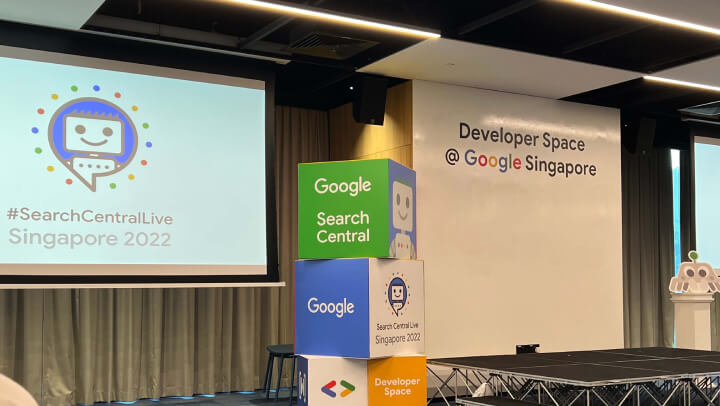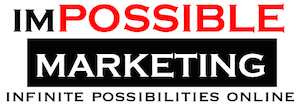22 Key Takeaways From Search Central Live Singapore 2022
Posted on: December 2, 2022

After three years after its inaugural Webmaster Conference, Google has finally not only resumed its Google Search event, but they have also rebranded it as Search Central Live.
Hosted at Google’s Singapore headquarters, the event was organised specifically for SEO professionals, such as digital marketers, website owners, web developers, digital marketers, as well as digital marketing agencies. This year’s Google Search Central Live Singapore 2022 opened up opportunities for fellow SEO professionals to network while learning more about recent and future Google Search updates, as well as beneficial website optimisation and SEO marketing strategies.
The objectives of the event were:
- Explain how Google Search works
- What’s new in Google Search
- Helpful content update
- What’s new in the Google Search console
- SEO for images and videos
- Crawling and indexing for websites
As a digital marketing agency in Singapore that has years of experience managing campaigns and portfolios across numerous industries, it was a learning experience we always welcome in order to take our SEO services to the next level. Here are 23 key takeaways that will prove beneficial to your SEO journey!
1. Google is always updating and evaluating their search engine
Google Search is updated at least thousands of times annually to help improve user experience as well as the quality of the SERPs. Just in 2021 alone, Google conducted more than 4,300 updates and 800,000 search quality tests. Their most recent major update in September, the Broad Core Update, targets and rewards quality, beneficial SEO content.
2. Know how Google Search functions
How Google Search functions can be explained in three fundamentals steps:
a) Crawling: Using Google Bot, Google’s automated crawler, every video, image, and text found online is downloaded into their database.
b) Indexing: After all the crawled information is downloaded, Google analyses them and stores the information in a large library called the Google index.
c) Ranking When a user keys in their query on the search engine, Google displays the relevant information on the user’s SERPs (Search Engine Results Pages).
3. Technical requirements
You know how Google Search works. However, if Google is not able to access your website or page, or does not even know of its existence, then it does not matter if you are aware of how Google Search functions. Therefore, it is vital that you should submit your website in order for your business or brand to make it through these stages.
4. Spam policies
Google’s spam policies are set up to protect their users and boost the quality of search results quality. Hence, in order to appear and rank well on SERPs, your content should not violate any of their policies, such as:
- Cloaking
- Doorways
- Hacked Content
- Hidden Links & Texts
- Keyword Stuffing
- Link Spam
- Sneaky Redirects
5. Creating people-centric content
It refers to creating content with the key target audience of visitors and readers rather than search engines. It means creating quality content that connects with people and providing valuable expert information that value adds to and meets their requirements and needs. Google favours first-hand experience that shows that your content can be trusted. That is why they launched their Helpful Content update in August.
6. What Search Consoles do
Google Search Console enables webmasters to check on crawling errors, search queries, and indexing status and optimise their website’s visibility. They have also simplified their item classification for easier useability and expanded their functions to allow brands to also check on their merchant listings reports, shopping tab listing reports, HTTP reports, and video indexing reports. Not only that, but to ensure that your pages are error-free, they have also recently brought back the Validate Fix feature.
7. Leverage on structured data
Structured data is a standardised format that informs Google Search Engines what your content is all about. While leveraging on it indirectly affects rankings, it mainly is to help Google Bot understands your content better. There are many types of structured data. You may validate your code or URL using a validation test to check if your page supports rich results.
8. Complete your Google Business Profile
In order to help your business or brand stand out, it is vital to fill up every piece of information on your Google Business profile. Once your business or brand has been verified, your profile will be displayed across Google Maps and Search, making it easier for prospective customers to discover and interact with you. When you fill-up your Google Business profile completely, consumers are:
- 2 times more likely to consider your business reliable and reputable
- 70 per cent more likely to visit your website or physical location, and 50 per cent more likely to engage your services or purchase your products
9. Create content on your Google Business Profile
From photos to videos, creating such content on your Google Business Profile engages and informs Google users about your business.
10. Create and optimise metadata
Metadata consists of meta titles and meta descriptions. They are the information that your page provides Google in order to know what your content is about so that the right information can be displayed on their users’ SERPs. It is crucial to fit in keywords as appropriately as possible in your metadata. Also, take note that for meta titles, the recommended length would be 50-60 characters, while for meta descriptions, the recommended length would be 150-160 characters. Any longer and Google may omit the excess in the SERPs, affecting how users understand your page.
11. Google investing in video
Google is investing in video to ensure that they give users:
a) The right video: Bringing them only high-quality and diverse ones
b) The right parts of the video: Bringing them only efficient and satisfying engagement
c) More than what they asked for: Bringing them the latest guided information
12. Best video SEO practices
Video is a rapidly-increasing format for content consumption and creation, with Google indexing videos all over the Internet to show users. In order to optimise your video to appear on the main SERPs, Google Images, Google Discover, and video search results, you need to:
- Create dedicated pages for your videos
- Allow Google to fetch content files in your videos
- Enable SeekToAction or Clip markup in your videos
13. JavaScript that cannot be extracted
Take note of the JavaScript coding you use. Not all coding can be extracted, resulting in Google Bot not being able to crawl and index your page. Examples are:
- Can extract: <a href=https://example.com> & /products.PHP?id=123
- Cannot extract: <span href=https://example.com> & javascript:window.location.href=’/products’
14. Optimise your images
Images are a crucial element of the Internet. Not only do they help users to visualise a concept or a product, but they also offer a visual break that separates an article into readable chunks. You may optimise your images by renaming the image file, adding an alt text, and ensuring that there is textual content before or after the image to allow Google Bot to understand the images’ relevance.
15. What to do if you have multiple versions of the same website?
Not all URLs are made equal. Google Search Console favours a safe and reliable website. Hence, if you have multiple versions of the same website, you might want to follow these steps:
- Favour HTTPS and remove any protocol duplicates
- Remove www or non-www
- Remove any URLs with redundant parameters, such as sessionID
- Remove other checksum duplicates
- Remove slash or no slash variant
16. Google does not crawl or index every URL
Index Selection does not contain all URLs into the index. Hence, it makes sense for Google not to crawl URLs that were already rejected.
17. What Google crawls under your domain
Let us say your domain is https://www.example.com/. When Google crawls through your domain, they assess three assets:
- https://www.example.com/blog/1
- Sitemaps (https://www.example.com/sitemap-blog.xml)
- Media links from page or SD
- https://www.example.com/image/1.jpg
- https://www.example.com/video/a.mp4
18. Always monitor your domain and server
A healthy SEO strategy does not end at creating quality, people-centric content. Always monitor your domain and server from your own server log and Google Search Console.
19. Core web vitals
Core web vitals report displays how well or poorly your pages are performing. The report displays URL performance categorised by status, from poor to good, URL group, and metric type. While they are not key factors to ranking well, they are still necessary and beneficial to keep track of. It does not mean that having all green scores leads to a better ranking. Having healthy core web vitals means a better user experience when they land on your page.
20. Keep away from ephemeral links
Ephemeral links refer to the phenomenon where hyperlinks cease to link back to their originally targeted page, domain, or file over a period of time. While they work, they lack long-term stability and annoy users.
21. Update Google via URL inspection or sitemap
Back to point number 3, whenever your website has updated its sitemap or contents, always submit updated pages to signal Google to update its crawling and indexing of your site.
22. Refer to Google Search Essentials
Google Search Essentials consist of the primary factors that affect the visibility and ranking of your online content, such as videos, articles, and images, on Google Search:
- Technical requirements: Knowing what Google is looking for in order for your content to appear on SERPs.
- Spam policies: Any uncalled practices and strategies that lower users’ experience, eventually leading to a lower ranking, will be cut off from Google SERPs.
- Key best practices: Constantly find ways to improve how your site appears on SERPs. For example, ensuring that your website is mobile-friendly.
Conclusion
Google Search is constantly evolving, and SEO marketing trends are always changing. An SEO journey is not a sprint but a marathon. At the end of the day, do not expect immediate results. Be patient and always keep yourself up-to-date with the latest Google Search knowledge to stay ahead of the game.
One way to keep up with such changes is to consider engaging a professional or an agency with prior experience and expertise. Hopefully, with these 22 key takeaways, you have learned a thing or two about managing your SEO. Remember, this race is a marathon. So, keep pushing till the end – the results are definitely worth every effort!

